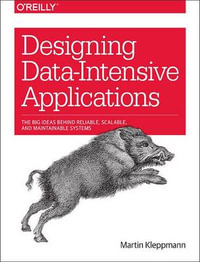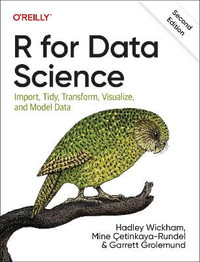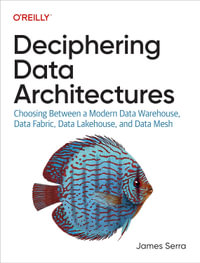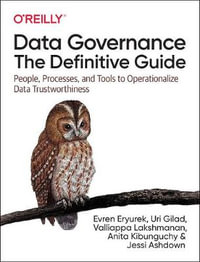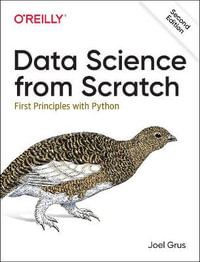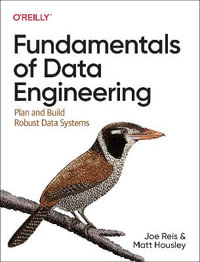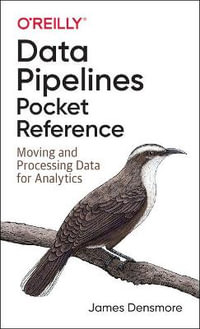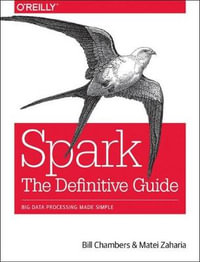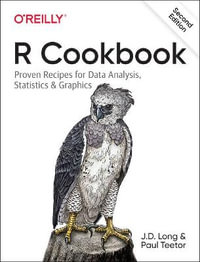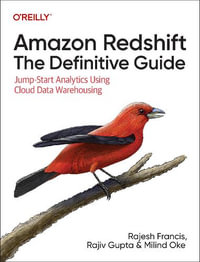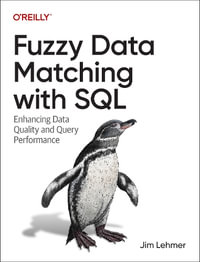| Foreword | p. V |
| Preface | p. VII |
| Prologue: Aims, Themes, and Motivations | p. 1 |
| Complex Relational Dynamical Systems | p. 2 |
| The Context: A First Contact with Dynamical Systems | p. 2 |
| Mutual Exclusion | p. 4 |
| Social Pressure | p. 7 |
| On the Chaotic Demography of Rabbits | p. 9 |
| Tools and Motivations | p. 14 |
| Overview of the Monograph | p. 16 |
| Mathematical Framework: Iterated Relations and Composition | |
| Dynamics of Relations | p. 21 |
| Functional Discrete-Time Dynamical Systems | p. 22 |
| Relational Dynamical Systems | p. 24 |
| Point-Level Nondeterministic Dynamics | p. 25 |
| Set-Level Deterministic Dynamics | p. 26 |
| Comparison | p. 26 |
| Preliminary Definitions and Properties | p. 28 |
| Basic Definitions About Relations | p. 28 |
| Notions from Topology | p. 31 |
| Monotonicity and General Junctivity Properties | p. 33 |
| Fixpoint Theorems | p. 37 |
| Elementary Properties | p. 39 |
| Metric Properties | p. 40 |
| Transfinite Iterations | p. 44 |
| Motivation | p. 44 |
| Transfinite Fixpoint Theorem | p. 45 |
| Transfinite Limits of Iterations | p. 47 |
| Discussion | p. 48 |
| Relations vs Functions | p. 48 |
| Set-Level Dynamics and Predicate-Transformers | p. 49 |
| Point-Level Dynamics and Trace Semantics | p. 50 |
| Nondeterminism and Probabilistic Choices | p. 50 |
| Transfinite Iterations | p. 51 |
| Time Structure | p. 51 |
| Dynamics of Composed Relations | p. 53 |
| Structural Composition | p. 53 |
| Composition of Relations | p. 54 |
| Unary Operators | p. 55 |
| N-Ary Operators | p. 56 |
| Composed Dynamical Systems | p. 59 |
| Dynamics of Composed Relations | p. 62 |
| One-Step Set-Level Evolution of Composed Relations | p. 62 |
| Point-Level Dynamics of Composed Systems | p. 67 |
| Algebraic Properties of Composition Operators | p. 71 |
| Composition of Unary Operators | p. 72 |
| Composition of Unary and N-Ary Operators | p. 72 |
| Composition of N-Ary Operators | p. 73 |
| Fixpoint Theory for the Composition | p. 75 |
| Discussion | p. 77 |
| Composition Operators | p. 77 |
| Nondeterminism and Probabilities Revisited | p. 78 |
| Fixpoint Operator and Composition | p. 79 |
| Abstract Complexity: Abstraction, Invariance, Attraction | |
| Abstract Observation of Dynamics | p. 83 |
| Observation of Systems | p. 83 |
| Trace-Based Dynamics | p. 85 |
| Symbolic Observation | p. 86 |
| Abstraction of Systems | p. 88 |
| Qualitative Abstract Verification | p. 89 |
| Observation as Abstraction | p. 91 |
| Discussion | p. 91 |
| Observation and Abstraction: Related Work | p. 92 |
| Symbolic Dynamics vs Astract Observation | p. 92 |
| Qualitative Abstract Verification | p. 93 |
| Invariance, Attraction, Complexity | p. 95 |
| Invariance | p. 96 |
| Forward and Backward Invariance | p. 96 |
| Global Invariance | p. 100 |
| Strong Invariance | p. 100 |
| Structure of Invariants | p. 102 |
| Trace-Parametrized Invariants | p. 103 |
| Fullness and Atomicity | p. 104 |
| Chaos | p. 106 |
| Fullness Implies Trace Chaos | p. 108 |
| Fullness and Atomicity Imply Knudsen Chaos | p. 108 |
| Devaney vs Trace vs Knudsen Chaos | p. 109 |
| Fullness and Atomicity Criteria | p. 110 |
| Criteria | p. 110 |
| Case Studies: Dyadic Map, Cantor Relation, Logistic Map | p. 113 |
| Attraction | p. 119 |
| Intuition: From Reachability to Attraction | p. 120 |
| From Weak to Full Attraction | p. 121 |
| A Taxonomy of Attraction | p. 123 |
| Attraction Criteria | p. 125 |
| Attraction by Invariants | p. 126 |
| Discussion | p. 128 |
| Invariance and Attraction: Related Notions | p. 128 |
| Energy-Like Functions | p. 129 |
| Dynamical Complexity | p. 130 |
| Abstract Compositional Analysis of Systems: Dynamics and Computations | |
| Compositional Analysis of Dynamical Properties | p. 135 |
| Aims and Informal Results | p. 135 |
| Inversion | p. 138 |
| Restrictions | p. 140 |
| Domain Restriction | p. 140 |
| Range Restriction | p. 141 |
| Negation | p. 143 |
| Sequential Composition | p. 144 |
| Intersection | p. 146 |
| Union | p. 147 |
| Products | p. 154 |
| Free Product | p. 154 |
| Connected Product | p. 155 |
| Combining Union with Free Product | p. 156 |
| Discussion | p. 156 |
| Compositionality: Summary | p. 157 |
| Limitations and Open Problems | p. 157 |
| Related Work | p. 159 |
| Emergence of Complexity by Structural Composition | p. 160 |
| Case Studies: Compositional Analysis of Dynamics | p. 163 |
| A Collection of Complex Behaviors | p. 163 |
| Smale Horseshoe Map | p. 164 |
| Cantor Relation | p. 168 |
| From Cantor Relation to Truncated Logistic Map | p. 169 |
| Paperfoldings | p. 172 |
| Introduction | p. 172 |
| Paperfolding Sequences | p. 173 |
| Dynamical Complexity of Paperfoldings | p. 177 |
| Partial Conclusions | p. 180 |
| Discussion: Compositional Dynamical Complexity | p. 180 |
| Experimental Compositional Analysis of Cellular Automata | p. 183 |
| Aims and Motivations: Attraction-Based Classification and Composition | p. 184 |
| Preliminary Notions | p. 186 |
| Cellular Automata | p. 186 |
| Transfinite Attraction | p. 188 |
| Shifted Hamming Distance | p. 188 |
| Experimental Classification | p. 189 |
| Formal Attraction-Based Classification | p. 191 |
| Introduction | p. 192 |
| Type-<$>{\cal N}<$> Cellular Automata | p. 193 |
| Type-<$>{\cal F}<$> Cellular Automata | p. 193 |
| Type-<$>{\cal P}<$> Cellular Automata | p. 194 |
| Type-<$>{\cal S}<$> Cellular Automata | p. 194 |
| Type-<$>{\cal A}<$> Cellular Automata | p. 195 |
| Discussion | p. 196 |
| Structural Organizations of CA Classes | p. 196 |
| Motivation: Simulation vs Theoretical Results | p. 196 |
| Linear Periodicity Hierarchy | p. 198 |
| Periodicity Clustering | p. 199 |
| Organization w.r.t. Shifted Hamming Distance | p. 199 |
| Dynamical Complexity in CA | p. 201 |
| Conjectures in CA Composition | p. 201 |
| Complexity by Composition of Shifts | p. 203 |
| Rules 2 and 16 | p. 203 |
| Cantor Relation | p. 204 |
| Comparison | p. 206 |
| A More Precise Conjecture | p. 206 |
| Qualitative Analysis and Complexity Measures | p. 206 |
| Compositional Analysis of Complex CA | p. 208 |
| Local Disjunction, Local Union, and Global Union | p. 208 |
| Comparison and Summary of Results | p. 210 |
| Discussion | p. 211 |
| Summary and Partial Conclusion | p. 211 |
| Open Questions | p. 212 |
| Classification: State-of-the-Art | p. 213 |
| Aperiodicity in Cellular Automata | p. 215 |
| Related Work in Composition | p. 216 |
| Compositional Analysis of Computational Properties | p. 217 |
| Automata as Dynamical Systems | p. 217 |
| Comparing Dynamical Systems | p. 220 |
| Extrinsic Method | p. 220 |
| Intrinsic Method | p. 221 |
| Our Comparison | p. 221 |
| From Locality to Globality | p. 221 |
| Turing Machines | p. 222 |
| Cellular Automata | p. 223 |
| Continuous Functions | p. 224 |
| General Model | p. 224 |
| Comparison Through Simulation | p. 227 |
| Simulation | p. 227 |
| Choice of Coding | p. 228 |
| From TM to CA | p. 228 |
| From CA to CF | p. 231 |
| Weak Hierarchy | p. 232 |
| Topological and Metric Properties | p. 232 |
| Continuity | p. 233 |
| Shift-Invariance | p. 233 |
| Lipschitz Property | p. 234 |
| Shift-Vanishing Effect | p. 235 |
| Nondeterminism | p. 235 |
| Summary | p. 237 |
| Computability of Initial Conditions | p. 238 |
| Hierarchy of Systems | p. 239 |
| Discussion | p. 240 |
| Composition and Computation | p. 240 |
| Further Work | p. 240 |
| Related Work | p. 241 |
| Epilogue: Conclusions and Directions for Future Work | p. 243 |
| Contributions and Related Work | p. 244 |
| Mathematical Framework | p. 245 |
| Compositional Analysis | p. 246 |
| Directions for Future Research | p. 247 |
| A Patchwork of Open Technical Issues | p. 248 |
| Fractal Image Compression | p. 248 |
| Distributed Dynamical Optimization | p. 249 |
| Distributed Systems and Self-Stabilization | p. 250 |
| Probabilistic Systems and Measures | p. 250 |
| Higher-Order Systems, Control, and Learning | p. 251 |
| Design of Attraction-Based Systems | p. 252 |
| The Garden of Structural Similarities | p. 253 |
| Coda: Compositional Complexity Revisited | p. 255 |
| Bibliography | p. 257 |
| Glossary of Symbols | p. 273 |
| Index | p. 277 |
| Table of Contents provided by Publisher. All Rights Reserved. |

